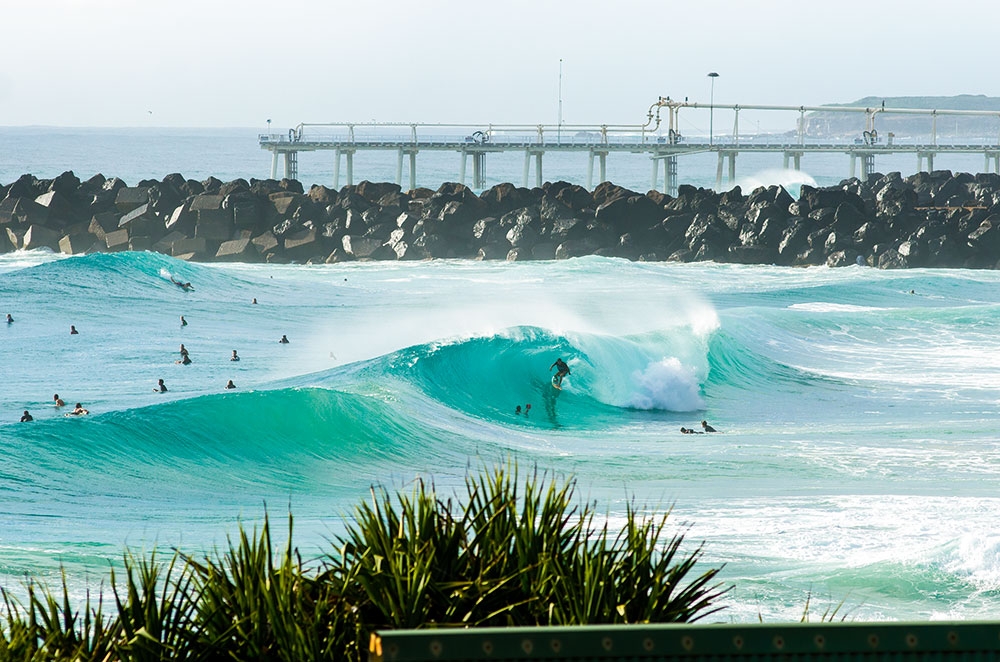Words Jed Smith
The following words and images are excerpts from Surfing Life 321, The Gold Coast Issue, on sale now. Because these interviews were conducted in 2011, we decided to speak with local business owners in the Tweed and Coolangatta area over the past few days, and publish another article highlighting the changes that have taken place over the years: http://www.surfinglife.com.au/news/sl-news/13663-teen-gangsters-of-the-tweed-the-other-side-of-the-story
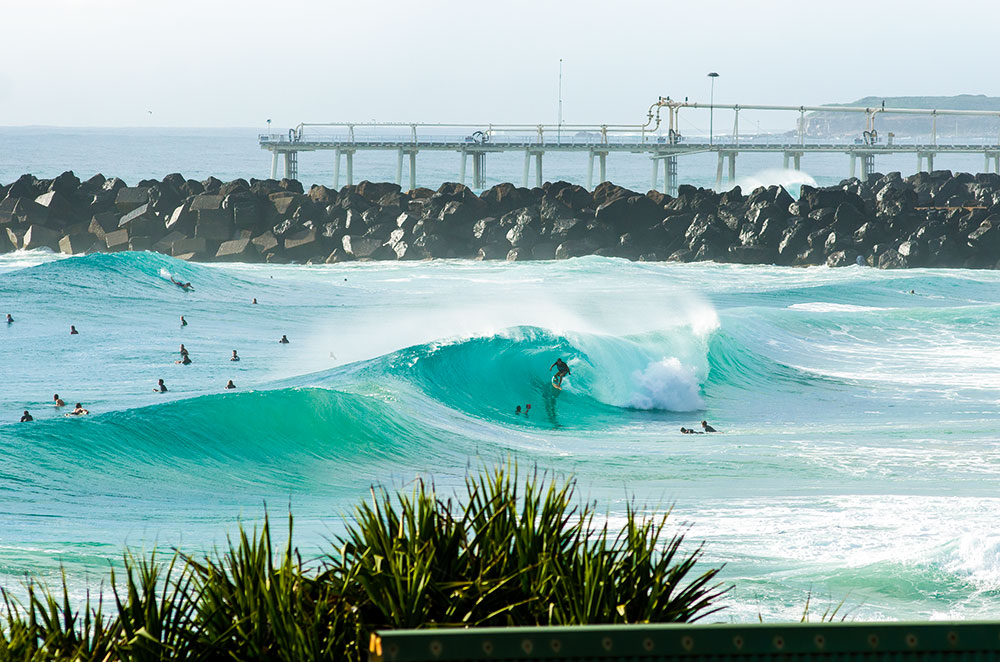 That’s the Tweed River Pumping Station, which is what we’d call our rap crew. Brent Dorrington gets pitted at D’bah, while the TRPS spews its sandy flows. Photo: Mike Egan
That’s the Tweed River Pumping Station, which is what we’d call our rap crew. Brent Dorrington gets pitted at D’bah, while the TRPS spews its sandy flows. Photo: Mike Egan
Random unprovoked attacks, stabbings up 40% in the last five years, the proliferation of youth gangs – doesn’t sound like the lucky country to us. Jed Smith took a trip to the bleeding heart of middle Australia to find out why so many kids just wanna beat the shit out of each other.
Sam Ford used to be a placid young man. Not the brawling type. But one night in 2009, he tried to break up a fight in which his mate was hit with a tyre iron. Sam himself was kicked in the head, and by entering the fray he tripped the wire on one of the fiercest gang disputes in his area.
Sam is from Cabarita, one of several suburbs that make up the Tweed Shire – an idyllic bush and river-rimmed township just south of the Gold Coast. Lately, it’s also been home to a long-running youth gang feud, and when it comes to beefs in the shire, none trump the one between the Caba boys and their cross-river rivals in Tweed Heads. The fight Sam had tried to break up involved several kids from both, and now the whole Tweed wanted a piece of him.
Damo Ford (no relation)was Tweed Heads’ wrecker. His size and aggression made him a valuable asset on the rugby league field, with the Gold Coast Titans pegging him as a future first grader. First and foremost, however, he represented the Tweed and when he saw Sam out a few weeks later he attacked him. With one punch, Sam was lifted off the ground, his head hitting the pavement with a pop as he landed. The blow fractured Sam’s skull, and as he lay there unconscious in a pool of his own blood, bleeding on his brain destroyed his faculties for speech and memory. Today, he suffers from serious brain damage. As Sam lay in a coma for the next two months, the shire’s teenagers teetered on the edge of a “full-on gang war”, remembers his brother, Joel. “Everyone wanted to get them back. There was heaps of anger.”
In the days following the attack the Cabarita community stepped in to restore calm, begging local kids to divert their anger into fundraising for Sam, which they did. A showdown was avoided, but by now several other gang beefs were running hot in the Tweed. A week before Sam was assaulted, a 22-year-old man was beaten to death in a brawl just metres away. While in another attack a local youth was pulled into a car in broad daylight by a rival gang before being beaten and dumped in nearby bushland. “We know who did this. It’s the same gang who have a go at us four to five times a week… The DNS (Dark Neo Soldjars) were behind this and now all hell is going to break out,” a friend of the youth told a Gold Coast news agency afterwards.
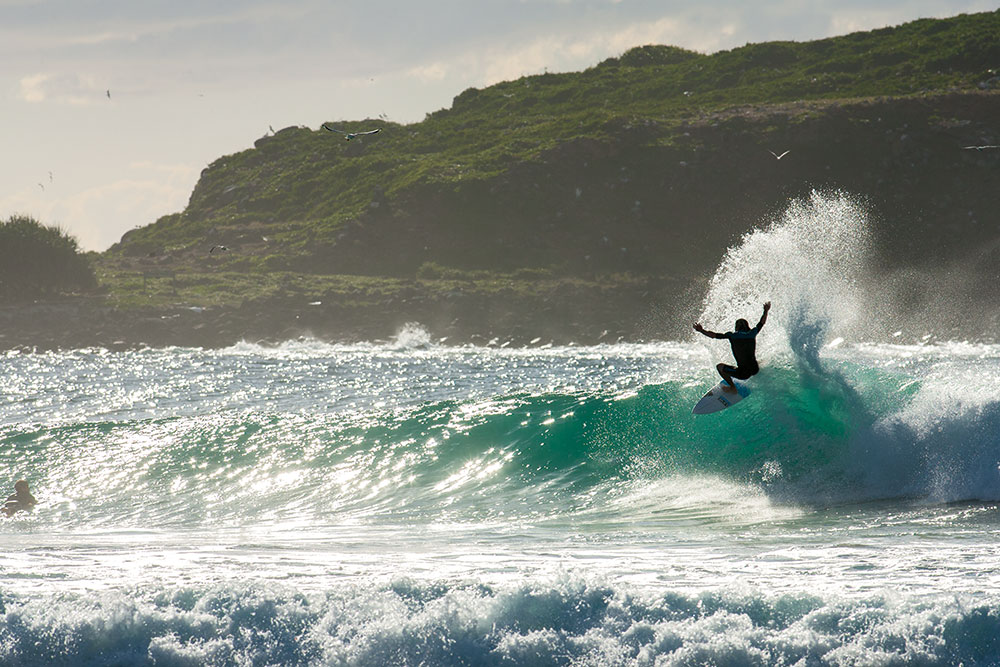 Wade Carmichael with the only form of violence that’s acceptable down Tweed way. Aquatic violence (crimes against lips). Photo: Andrew Shield
Wade Carmichael with the only form of violence that’s acceptable down Tweed way. Aquatic violence (crimes against lips). Photo: Andrew Shield
Elsewhere, kids were branding themselves with rings, tattoos, clothing, garage rap songs, postcodes, and Facebook and Myspace pages; house parties had become little more than drunken fight clubs, often involving weapons; football games were ending in brawls, egged on by rival gangs from the sidelines; there were spot riots; even dads escorting their families home from dinner were being chased and beaten by stick-wielding kids. “It got to the stage where you didn’t want to be outside by 7.30. You wanted to be home or inside or at your mate’s house. You did not wanna be on the streets because they were just out there doing it,” recalls Kieren, a 17-year-old from the Cudgen/Kingscliff area in the Tweed.
The violence was as random as it was pointless. Even those trying to help the kids became targets. The Tweed’s major youth service, St. Joseph’s, had its refuge destroyed by a gang, at least one of whom used to live there. The Salvation Army suffered a similar attack and even the shire’s large elderly population came under fire. Vietnam War veteran Martin Grove thought he’d done enough to earn a quiet retirement in the Tweed. But after returning home to find his front door and car smeared in excrement, following months of similar physical and mental torment, he broke down. Martin grabbed his shotgun, marched onto the front lawn of the kids he believed were responsible, and blew his brains out. The Tweed erupted.
In the days after, over 1000 local residents turned out to rally against the ‘out of control’ youths and call for a police crackdown. Talk even turned to armed vigilantes taking to the streets. For a while peace did reign on the streets of the Tweed, but it didn’t last. It never does. “People make peace and then something happens and everyone breaks off into their little groups again,” says Sam Ford’s brother, Joel.
When 18-year-old Sydney youth Thomas Kelly was killed in an unprovoked one-punch attack in Kings Cross the issue of youth violence in Australia became a national one. Leading youth psychologist Michael Carr Gregg claimed we were beginning to see a “new breed” of adolescent Australian males. “Extremely narcissistic, under-fathered… he is beset with rigid, inflexible thinking, no respect for authority, little exposure to tradition or ritual and has few, if any, skills in anger management,” he said. In the months before and after the death of Kelly, suburban Australia had indeed begun to show signs of a cancerous problem. Stabbings were up 40% over the past five years in Sydney; youths in rural Victoria were reported to be signing up to sell drugs for the bikies; youth workers spoke of indiscriminate violence such as the “one-punch sport”. “Kids board trains and bash someone before they get off at the next stop, just for fun,” Father Chris Riley of Youth Off the Streets in Western Sydney tells me. When Thomas Kelly’s killer was eventually brought to face charges, the situation took on a cartoonish quality when one of his supporters attacked a cameraman out the front of court, on national television, rendering him unconscious. The lucky country, eh?
In the two months I spent in the Tweed I met all kinds of kids, from petty vandals to the kinds who would, or did, go around randomly bashing strangers. I discovered that while the victims might be random, the mindset isn’t. They all share the same visceral contempt for their tropical environment, instead harbouring strange fantasies about living the blinged-out thug-life of a hip hop star or stand-over man. Their heroes are not the players from the Titans, the moderately successful local rugby league club playing in the national league, or two-time world surfing champion Mick Fanning, who grew up and still lives here. Rather, they take their cues from anti-heroes like The Game and Yelawolf, with a side helping from our own machismo culture – think bikie gangs, the Bra Boys, Underbelly, Chopper.
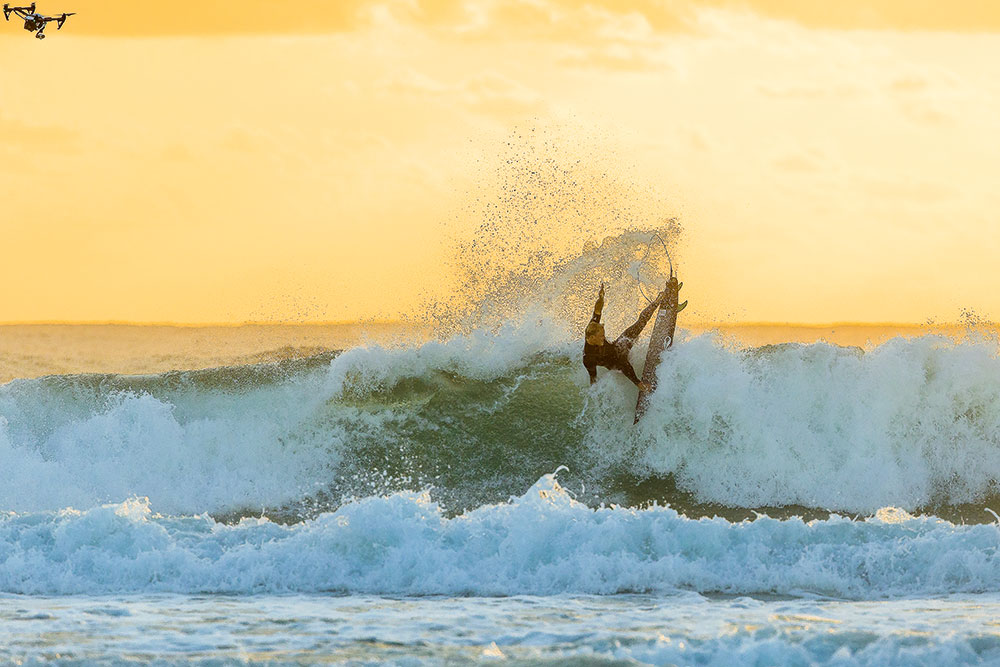 In Los Angeles, police helicopters circle overhead; on the Tweed they have drones. Chip Wilson, under the watchful eye of the Caba “ghetto bird”. Photo: Matthew O’Brien
In Los Angeles, police helicopters circle overhead; on the Tweed they have drones. Chip Wilson, under the watchful eye of the Caba “ghetto bird”. Photo: Matthew O’Brien
“KK87 [a gang from Kingscliff in the Tweed Shire] wanted to be like the Bra Boys – they’re a surfie town and wanted to get [their postcode] tattooed on them. And The Game [the American hip hop artist], with the indigenous people, they’re as close to what this region has to negroes so they think, well, I’m black, I’m a gangsta,” explains Kieren.
They are not only the kids of alcoholics, drug addicts or welfare cheats, either. The kids of rich parents, living in 90210-style comfort, are prone to the same delusions. Jade Lacey and his brother Dionne are the sons of millionaire milk moguls Ken and Madeleine. In 2007 they were arrested for the shooting murder of 23-year-old gardener Kevin Palmer (the row began when Dionne accused the man of “looking at him”).Weeks earlier, the two brothers had taken a man to an island off the coast of the Tweed and forced him to dig his own grave at gunpoint, before shooting him in the hand. They are each serving jail terms of 16 (Dionne) and 11 years (Jade) for their crimes. Even at the other end of the social spectrum, in the fibro neighbourhoods, an affinity with ghettoes seems absurd amid the wide streets, neat homes and constant sunshine. The Tweed has its share of disadvantage, sure, but compared to where? Anyone can have the dream in this land if they really want it. And if they don’t, there are many worse things in this world than collecting welfare from the north coast of New South Wales. Wasn’t that the dream a generation ago?
With its sturdy brickwork, large garage and front lawn, the house of 15-year-old Tweed rapper Cheniki Paulson epitomises the Australian suburban dream. Inside it’s a different story. A child cries, old bowls of food are left around the floor and the whole place emanates dishevelment. I’m here to hear him rap. As I sit on his bed admiring the posters of his American gangsta rap heroes, Cheniki readies his huge sub woofers. Then he begins.
In our AND1s, I’m a gangsta nigga with a gun, never run, hideout from none.
People see me coming through with my colours on, they can’t see me cause I’m gone in the zone…
Rollin’ with cousins, we get ‘em fuck ‘em by the dozen. We don’t give a fuck cause the drugs still buzzin.
And the chorus…
Bow Down when you see them Tweed Niggaz. Bow Down cause we the realest niggaz. Bow Down cause we ain’t a hater like you. Bow Down to the Tweed Breed soldier in you.
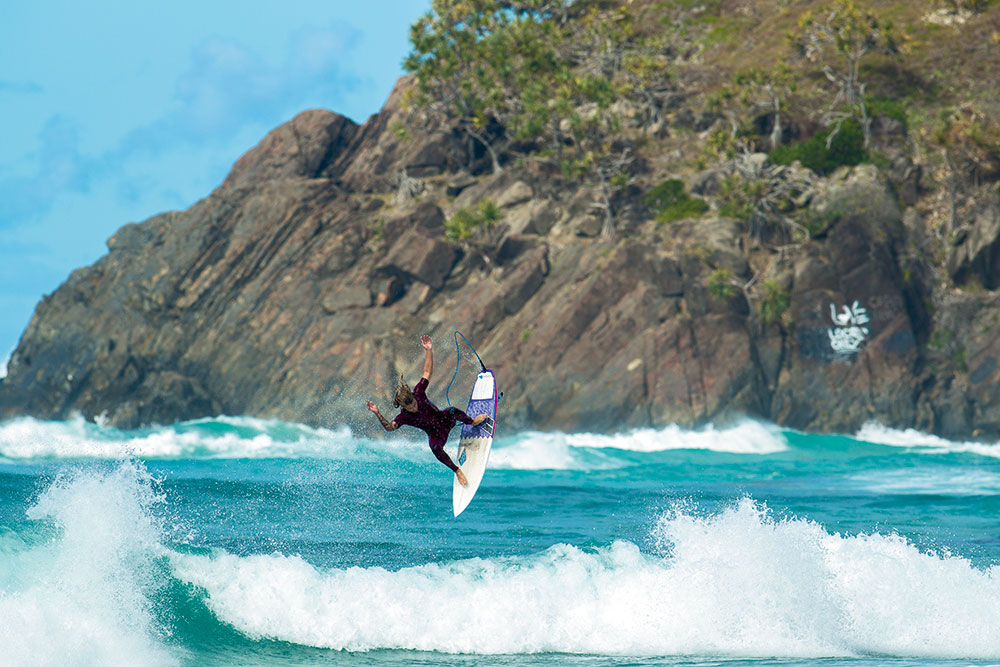 It’s too beautiful for all this fussin’ and feudin’. Joel Ford has got the right idea, choosing fun over fighting. Photo: Andrew Shield
It’s too beautiful for all this fussin’ and feudin’. Joel Ford has got the right idea, choosing fun over fighting. Photo: Andrew Shield
In the days following the 2011 UK riots – in which youth looted and indiscriminately attacked people across England – British historian and social commentator David Starkey attracted widespread criticism when he attributed the violence to “the whites [having] become black” and “a particular violent, destructive, nihilistic gangster culture [becoming] the fashion”. A trip through Australia’s suburbs breathes some life into his argument. Whether it’s the Full Blooded Islanders, aka FBI (Sydney), the Bankstown Bloods and Crips (Sydney), Bra Boys (Sydney), the Laneway Boys (Nimbin), Warilla Boys (South Coast NSW), Gang of 49 (Adelaide), C-Town Soldiers (Melbourne) or the Reservoir Bloods (Melbourne), provincial gangs are a staple of Australian youth culture. Sydney-based cultural studies professor Tony Mitchell has been monitoring urban and gang culture since the 1980s and says their rise is “understandable”.
“[Joining gangs] is a way of bonding, sticking together, and a way of expressing their alienation from the community they live in… Youth crave a sense of belonging, a purpose in their life, something that ties their existence together,” he says. And Australian culture can no longer provide that? “I suspect not in those kinds of rural areas where you don’t get the attractions you do in the city,” he says. Lianna, a 19-year-old woman from the Tweed, agrees. “There’s just not that much different stuff that goes on, so people make up their own differences. It seems like [the gangs] go over the top with pride to make up for the feeling that there is something missing,” she says.
On a Saturday night I take part in some local Tweed culture – a house party thrown by a respected local pro surfer, Chippa Wilson, which also doubles as a kind of welcome back for Sam Ford, who is here in a wheelchair. It’s been 18 months since the attack and his assailant has been sentenced to six years in prison. Gangsta rap booms through the backyard, before a thick-set youth mounts a set of stairs and begins rapping. He rhymes about cars, the cutthroat life of growing up in the Tweed and his boys having his back, before the gig takes a melancholy turn when he dedicates his last song to Sam. “Smile Sammy, smile, smile, smile,” he raps to loud cheers; all the while people awkwardly make way for Sam as his friends wheel him around. Mostly, they just want him to smile, which he does constantly.
Meanwhile, one of the partygoers – an outsider from a neighbouring suburb – is king hit while pissing on a tree out front, possibly with a lump of wood. He hits the ground, unconscious, blood pouring from his mouth. The first person to reach him walks straight past and rejoins the party, assuming he’s just passed out drunk. When he regains consciousness, he tells helpers, amidst a gargle of blood, that he can’t feel his front teeth: they’re gone, his jaw is broken and his cheekbone is fractured. I begin to ask questions, but no one’s talking. The cops are never called and even Sam’s mum, who I speak to the following morning, treats it as just another unfortunate but routine incident in the Tweed.
If you like what you’re reading and wanna read more, jump on over here.



